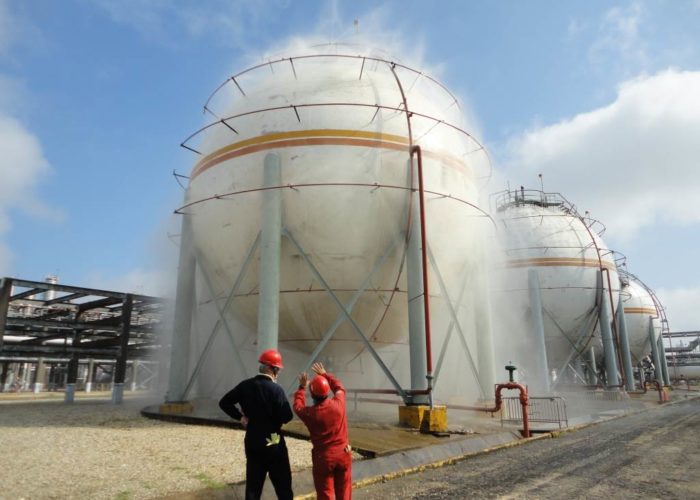Here in this Article we will see the 3 most common types of Pressure Vessels
A pressure vessel, is one of the most important components in industrial and petrochemical process plants. In the broad sense, the term pressure vessel encompasses a wide range of unit heat exchangers, reactors, storage vessels, columns, separation vessels, etc. Handling the pressure vessels associated with risks . So in many countaries the production and operation of pressure vessels are controlled by legislation. This legislation may define the national standard to which the pressure vessel is to be designed, the involvement of independant inspection during construction, and subsequently the regular inspection and testing during operation. Some national pressure vessel standards such as ASME VIII (1993) or BS5500 (1994) have effectively the status of defacto international standards.
The 3 most common types of pressure vessels are categorised as :
Storage Vessels
The most common type of pressure vessel stores liquids and gases for industrial processes. These typically correspond to either the vertical or horizontal variety, although some spherical storage vessels are in use. Used primarily to store liquids, these pressure vessels are also available in a range of sizes. Storage tanks usually store utilities such as fuel oil, material that will be used later in a process–such as liquefied hydrogen and chlorine, or finished products like compressed natural gas. Tanks are commonly manufactured using carbon steel, but the material can vary based on the product being stored and the exterior environment.
Fig : Vertical oil storage vessel
Manufacturing of steel vessels for pressure filters
Depending on the exact role or product to be stored, they are constructed using different materials with carbon steel being the most common material type. In many cases, internal liners of a different material are used in addition to the vessel’s external material. This allows a material to be used for the external construction that would be at a detriment if exposed to the product. Therefore allowing the storage vessel to produced for a less cost, than that of using a special material.
Heat Exchangers
The second most common type, and almost as prolific as storage vessels, is the heat exchanger. Found in almost every aspect of life, from food service to industrial plants, heat exchangers make modern processing and manufacturing possible.
Heat exchangers transfer heat from one medium to another to properly store a product, optimize energy use, or facilitate a specific process. The shell and tube, the most common type of heat exchanger used in large chemical processes, transfers heat through a bundle of tubes within a pressurized shell. One type of liquid runs through the tubes while another liquid flows over the tubes, thus transferring heat between the two fluids.
Fig : Shell and Tube type Heat Exchangers
Carbon steel is a common material but usually more stringent alloys are used to ensure longevity and proper functioning.
Process Vessels
Process vessels are used to remove, combine, agitate, or break down products in a controlled environment. Process vessels come in four sub-types:
- Drums are the most basic kind of process vessel and are usually used to let vapor escape or to collect byproducts during a process
- Reactors use catalysts or agitators to create a desired reaction in the vessel.
- Columns use mass transfer devices to facilitate mass transfer or mass separation processes.
- Gravity separators are vessels that divide streams of mixed-phase material, such as separating fluids from vapors.
Fig : Process Vessels
Process vessels are components in which various processes are performed. Such as breaking down a product, combining product, removing various elements or aspects of a product and more. Process vessels work in conjunction with the other three common types. They are usually specialized designs for their specific process and require unique construction materials or multiple material types.
Naturally, these three common types can be further defined by other aspects. What is critical and vital is that all require three important elements, a proper design, appropriate material selection and quality construction. A deficiency in any one or all of the three can pose a serious challenge for both the process and delivery of the end objective.

